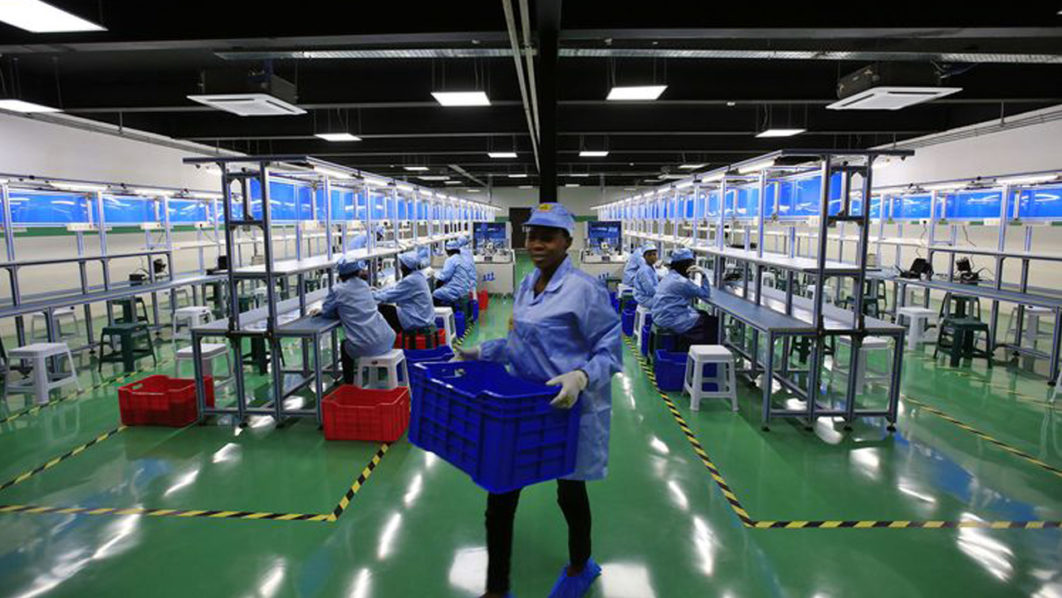Manufacturers pulling out of China should consider Africa to diversify their supply chain
South China Morning Post | 24 May 2020
Manufacturers pulling out of China should consider Africa to diversify their supply chain
by Stewart Paterson
Stewart Paterson is a Hinrich Foundation Research Fellow
China’s manufacturing domination, with its share of global manufacturing at 28 per cent, has given it considerable economic power. Covid-19 has laid bare China’s willingness to use this power for geopolitical ends and brought home the very real risks
of overreliance on any single source for critical supplies. There is a growing sense of urgency for supply chains to become more diversified, which begs the question : who can fill the void ?
Rising labour and land costs, and the arbitrary nature in which China has dealt with foreign firms, combined with disappointing results for many in the Chinese domestic market, had already led many multinational companies to question their China strategy. While other Asian economies stand to expand their market share in manufacturing as a result, Africa could become an even better low-cost alternative with an attractive domestic market.
The combination of a desire of many multinational companies to diversify manufacturing away from China, the rapidly growing working-age population of Africa, and the creation of the African Continental Free Trade Area (AfCFTA) could drive rapid economic expansion in the African continent over the coming decades.
About 17 per cent of the world’s population live in Africa. Sub-Saharan Africa is expected to add about 1.1 billion people to its population by 2050 and by the end of the century, 40 per cent of the world’s population will live in Africa, putting it on a par with all of Asia, if forecasts prove correct.
One demographic factor holding back economic growth in sub-Saharan Africa is the small percentage of population aged between 25 and 65 years. This prime working-age segment accounted for about one-third of sub-Saharan Africa’s population in the last 40 years, while in rapidly growing Asian economies, it accounts for more than half.
This situation will change in the coming decades as Asian populations, particularly China’s, ages, and the younger cohort of Africans reaches working age. Along with India, sub-Saharan Africa will account for nearly all the growth in the working-age population between 2020 and 2050. This has the potential to drive significant growth in per capita gross domestic product in sub-Saharan Africa, as a larger percentage of the population can meaningfully contribute to economic activity.
Sub-Saharan Africa enjoys a per capita GDP like that of China when it acceded to the World Trade Organisation. The key to China’s spectacular economic growth
since then has been the combination of a favourable demographic dividend (its working-age population grew from 750 million to one billion in the past two decades) with rapid capital formation through foreign direct investments.
Gross fixed capital formation in China has been on a structural up trend relative to GDP, reaching a recent high of around 45 per cent. In contrast, this has hovered in the low 20 per cent range for the past decade in sub-Saharan Africa.
Foreign direct investment, although small in relation to the overall growth in capital stock, played a major role in raising productivity levels in China. The country enjoyed net FDI inflows averaging about 4 per cent of GDP in the first decade of this century, and up to one-third of growth in China’s GDP can be traced to the direct and indirect impact of FDI flows.
According to World Bank data, sub-Saharan Africa has only attracted FDI inflows of around 2.5 per cent of GDP in the last 10 years, and the trend is declining. Could sub-Saharan Africa attract an additional US$35 billion a year of FDI to take it up to or beyond 4 per cent of GDP ? Given the concerns around China and manufacturing, this seems quite plausible.
The creation of the AfCFTA could enhance the attractiveness of sub-Saharan Africa as an investment destination and manufacturing base. The idea behind this free-trade agreement is to bring down trade barriers and establish a single market and customs union. The large market size could lead to economies of scale in manufacturing. It has the potential to boost manufacturing investments not just for exports, but to also to serve the unified African market as well.
The combination of a single African market, cost competitiveness and its growing working-age population makes Africa potentially a compelling investment destination for multinational companies looking to diversify away from China-centric global value chains.






